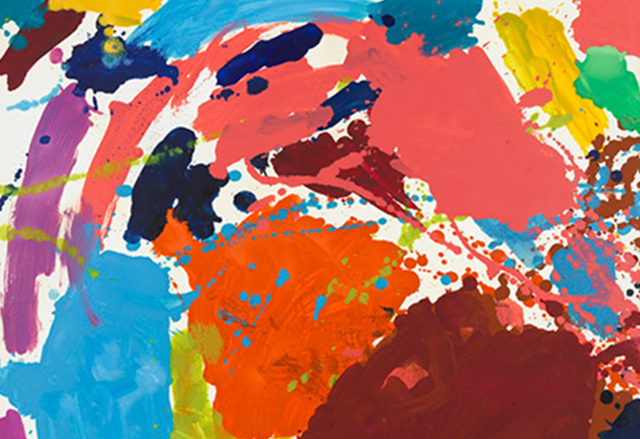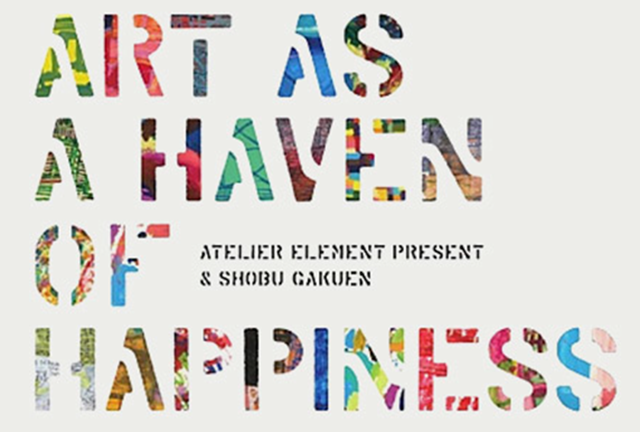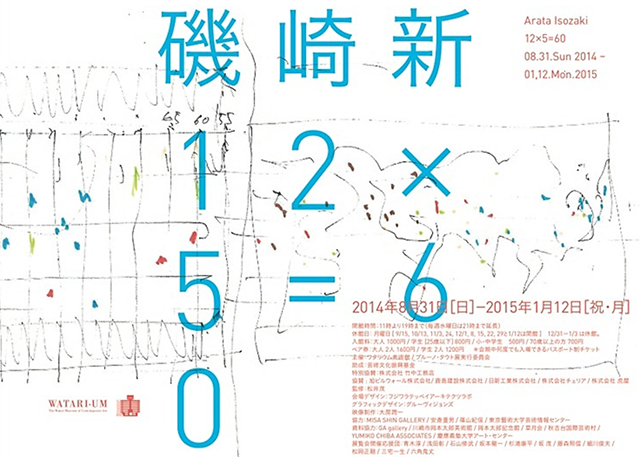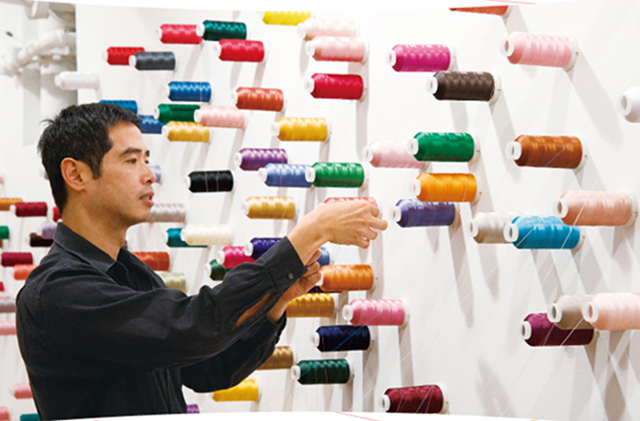This month we present three unique and distinct art experiences, each of which represents a different idea of hands-on learning.
By Sarah Custen
All of these exhibitions engage the viewer as active participants, bringing us closer to the artists and making students out of all of us as we learn from each other with open minds and open hearts. Whether September means back-to-school or business-as-usual for you, it’s never too late to learn something new. Or, as American author Tom Robbins put it, “It is never too late to have a happy childhood.”
Art as a Haven of Happiness
July 26th – October 8th Tokyo Metropolitan Art Museum Tuesday – Sunday, 9:30 – 17:30 Closed Mondays except 9/15 and 9/22; closed Tuesday, September 16th Website“Art as a Haven of Happiness” is the brainchild of two schools, a creative collaboration between Atelier Elément Présent and Shobu Gakuen. Each program brings a unique approach to artistic inspiration as a necessary and vital outlet for those with intellectual disabilities. Atelier Elément Présent represents creativity with curriculum, offering people born with Down Sydrome the supplies, space and support they need to create, without direct supervision. Staff simply provide brushes and paint and then stand by as the artists produce, discover and socialize in a casual yet encouraging environment. Shobu Gakuen, a residential facility for the intellectually disabled, utilizes a craft workshop format, “Kobo Shobu,” where residents engage in all manner of tactile talents, from textiles to woodcrafts to pottery and embroidery. These hands-on, artistic activities are designed to foster individuality and independence.
Together, these studios seek to express both the light, playful joy of creativity as well as the deep emotion and intense focus required of their artists. Each artist has a particular personal approach–some silent, some social–but all are transformed by the process, transcending individual boundaries to become part of a creative whole. “Art as a Haven of Happiness” celebrates the experience of both artist and audience, the shared space in which they are free to simply be.
Arata Isozaki 12×5 = 60
August 31st, 2014 – January 12th, 2015 Watari-Um, The Watari Museum of Contemporary Art Tuesday – Sunday, 11:00 – 19:00 (open Wednesdays until 21:00) Closed Mondays WebsiteThe basic math of Japanese artist Arata Isozaki’s “12×5 = 60” belies a complex web of inspiration and innovation, a mixed meditation on the concept “Thoughts Beyond Architecture” wherein we experience the exterior world as both a standing tribute/monument to cultural representation, as well as an ever-evolving reaction to it, a concurrent conception of the architectural spaces that house us and the artistic space that allows us to fly free.
While some may toil within cages, Isozaki operates from a nest, recreated here as a one-to-one model of Isozaki’s “Tree-House”/study in Karuizawa. In this exhibition, we study the student, observing the way the artist draws from the world around him to make art and challenge perceptions of architecture and space. We are invited into his world, from his “Tree-House” to his tools, his journals and sketches, travels and collaborations, we witness the artist as a whole in this intimate yet expansive view of a personal creative process, a private productive world made public.
Lee Mingwei and His Relations:
The Art of Participation– Seeing, Conversing, Gift-Giving, Writing, Dining and Getting Connected to the World
September 20th, 2014 – January 4th. 2015 Mori Art Museum Monday – Friday, 10:00 – 22:00 (10:00 – 17:00 on Tuesdays) WebsiteThis exhibition is both a mid-career retrospective and a study in participatory art, a large-scale showing of Lee Mingwei’s major works, many of which are being united for the first time. An exercise in spontaneity as much as control, Mingwei’s carefullly prepared works take on a life of their own as the audience participates to varying degrees–some serendipitous and some scheduled–becoming the artwork itself.
The Taiwan-born, New York-based artist challenges and embraces viewers, asking them to bring new life to the works and possibly take away a new understanding. In The Mending Project, for example, bright spools of thread unravel the complex connections between emotion and possession, as Mingwei himself repairs and reconstructs participants’ own damaged textiles, placing them side by side to form a continuously evolving exhibition. Experience this and several other of his major works, alongside contextual reference works by other international artists, in an exhibition that promises to be different every day.











